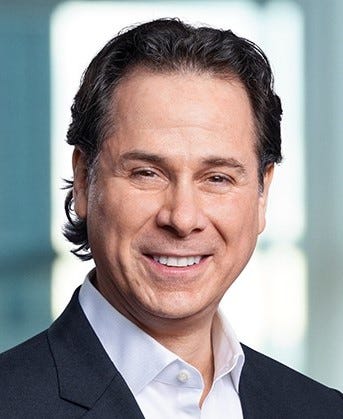Sizing up the fastest-growing grocer: AmazonSizing up the fastest-growing grocer: Amazon
Analysis: Solomon Partners’ Scott Moses sheds light on Amazon’s grocery market status with a telling infographic looking at “5 things you might not know” about the retail giant.

Everyone in the grocery industry is well-aware of Amazon’s current—and potential—market power, going to back how its 2017 acquisition of Whole Foods Market shook up the sector (and others). More recently, the e-tail giant has fielded its own brick-and-mortar supermarkets with Amazon Fresh stores (now with 40-plus locations) and, despite some stumbling blocks, continues to tinker with its physical grocery store model. And on Wednesday, the company enlarged its grocery retail audience—which also includes Amazon.com shoppers—by opening up Amazon Fresh delivery to non-Prime members.
But how much do industry stakeholders really know about Amazon’s grocery muscle?
Scott Moses, managing director and head of grocery, pharmacy and restaurant investment banking at New York-based Solomon Partners, recently discussed today’s grocery retail marketplace in a video call with Russell Redman, executive editor at Winsight Grocery Business. Separately, Moses provided WGB with an insightful snapshot of Amazon’s grocery market presence in an infographic titled “5 Things You Might Not Know” about the Seattle-based retail giant and the grocery business. Check out his infographic and analysis below, and note how he points out that Amazon may only be just beginning in its grocery market strategy. — Russell Redman
5 things you might not know about Amazon
America’s grocery industry may be the most fragmented of our lifetimes, with national/discount grocers adding more than 38,000 new stores and $500 billion in grocery sales over the past 20 years. But the grocer that has been growing its grocery business at the fastest pace has been Amazon (~$60 billion, or ~25x, since 2003), which clearly had the same epiphany as Walmart 25 years ago: If you want to be the world’s No. 1 retailer, you need to be its No. 1 grocer.
Catalyzed by the acquisition of Whole Foods in 2017 and accelerated by Amazon Prime’s exponential growth, Amazon has leveraged its sterling AA credit rating (enabling it to borrow cheaper than most countries) and extraordinary $1.4 trillion valuation—more than all U.S. grocers combined (that’s Walmart, Target/Shipt, Costco, BJ’s, CVS, Walgreens, Rite Aid, Publix, Dollar General, Dollar Tree/Family Dollar, Publix, Ahold Delhaize, Kroger, Albertsons, Sprouts, Grocery Outlet, Weis, Ingles, Natural Grocers, UNFI and SpartanNash)—to become America’s fifth-ranked grocer, and likely No. 4 by the end of 2023.

Source: Solomon Partners/Scott Moses
Amazon CEO Andy Jassy very clearly noted the importance of grocery to Amazon—and the strength of its grocery business—on his April 27 earnings call:
“If you really want to serve as much of grocery as we’d like to, you have to have a mass physical offering. And that’s what we’ve been working on for a few years with a brand we’ve called Amazon Fresh. We wish we were further along at this point. We’ve tried lots of ideas. We haven’t yet found conviction around the format that we want to go expand much more broadly. We have a set of experiments and ideas and concepts that we’re working on across our dozens of stores there. And we’re pretty optimistic that we have something that may very well work. And we’re hopeful, over this next year, we find that,” Jassy told analysts in the call.
“But we continue to believe it’s a big business for us today. It’s continuing to get bigger, but we believe we have the opportunity for it to be much larger for Amazon and where we can help customers more broadly,” he said. “And I think, having that physical presence, we will also have the ability both to be able to serve the grocery products they come for as well as store some other pieces and help customers across some other product lines as well.”
What may be most fascinating for retail observers is that, by Jassy’s own admission, Amazon has not yet figured out grocery.
Given Amazon’s unmatched financial resources and fairly clear commitment to grocery as part of its ubiquitous retail leadership strategy, one daunting question unquestionably pervading American grocery boardrooms is, “What happens when they do?”
About the Author
You May Also Like





.webp?width=300&auto=webp&quality=80&disable=upscale)
